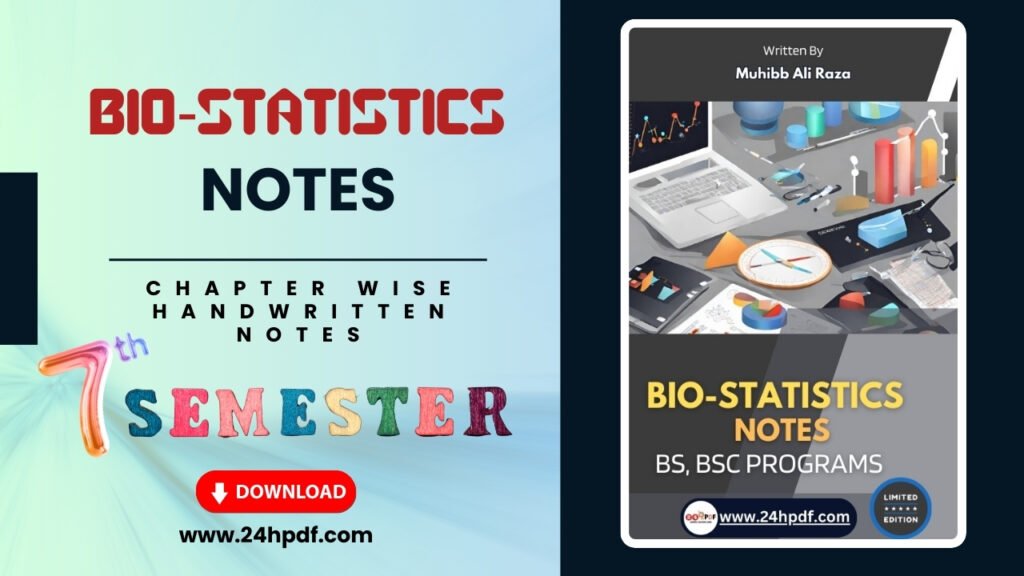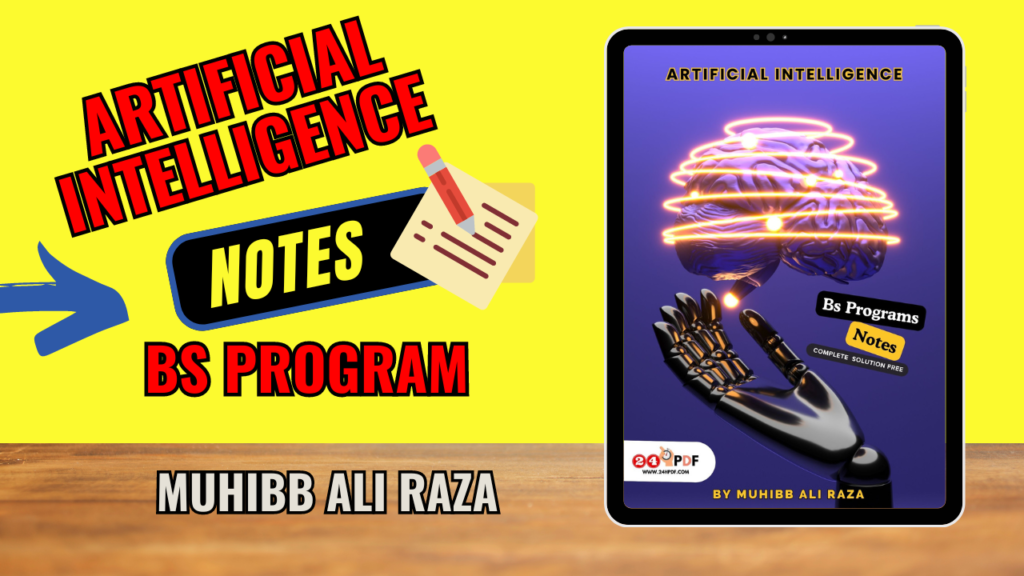
Introduction:
Biostatistics plays a crucial role in understanding and interpreting data related to biological phenomena. This set of notes delves into fundamental concepts and techniques essential for analyzing and presenting data in the field of biostatistics. From understanding different types of data to calculating measures of central tendency, this resource serves as a comprehensive guide for students and researchers alike.
Course Outline:
Chapters,2,3,4,5,6, Type of data and methods of data collection, data arrangement and presentation of data, presentation data, frequency distribution, prepare frequency table taking 5 units as width?, tabulate grouped frequency distribution?, grouped frequency distribution, indicate the class boundaries and class limits clearly?, construct ungrouped frequency distribution of these data, data representation by stem and leaf display, make a stem display for data?, to get the array , we associate the leaves in order of size, make a stem and leaf table for following data?, to get the array, we associate the leaves in order of size, data representation by diagram, pie chart, prepare a pie chart, chapter no 3 ( measure of central tendency of averages, mathematical average, positional average, mean, median, mode, quartiles, decile, percentiles, quintiles, quadratic mean, arithmetic mean, geometric mean, harmonic mean, simple, weighted, simple arithmetic mean, weighted arithmetic mean, Estimate the mean deviation from arithmetic mean, recostruct the original table, mean deviation and qd and range of following frequency distribution showing the weight of Apple, mean deviation as well as their coefficient, for the population of number, find correct mean and standard deviation, test the statement of following distribution, calculate mean a standard deviation, find arithmetic mean and standard deviation, chapter no 5 ( discrete probability distribution) Binomial probability distribution, probability And distribution, probability rules, tools of permutation, tools of combination, Question of correlation, standard error, find standard error of y on x from following data, obtain the standard error of estimate, and others.
Biostatistics Notes Download PDF
Descripation/ explanation:
in these notes i describe that the best problem solution about biostatistics.
In the realm of biological research, understanding and interpreting data are fundamental aspects that drive scientific discovery and progress. Biostatistics, the application of statistical methods to biological data, serves as the cornerstone for analyzing, organizing, and presenting information gleaned from various biological phenomena. In this article, we delve into the core concepts of biostatistics, covering topics ranging from types of data and methods of data collection to measures of central tendency and data representation techniques.
Types of Data and Methods of Data Collection: Biostatistics begins with the recognition of different types of data encountered in biological research. Qualitative data describe characteristics or attributes and are often categorical in nature, while quantitative data represent numerical values and can be further classified as discrete or continuous. Understanding the nature of the data is crucial for selecting appropriate methods of data collection. Researchers employ diverse techniques, including surveys, experiments, observational studies, and clinical trials, to gather relevant data tailored to their research objectives.
Data Arrangement and Presentation: Once data are collected, they must be organized and presented in a manner conducive to analysis. Frequency distribution, a method for summarizing data by displaying the frequency of each value or range of values, is a fundamental tool in data arrangement. Preparation of frequency tables involves categorizing data into intervals or classes and tabulating the frequency of observations within each interval. Grouped frequency distributions further condense data into intervals, with clear delineation of class boundaries and limits to ensure accurate representation.
Data Representation by Stem-and-Leaf Display: Stem-and-leaf display is a graphical technique used to represent numerical data in a concise and visually appealing manner. Stem-and-leaf plots organize data by separating leading digits (stems) from trailing digits (leaves), facilitating quick identification of central tendencies, variability, and outliers within the dataset. Stem-and-leaf tables provide a tabular representation of the same data, offering additional insights into the distribution and structure of the dataset.
Data Representation by Diagrams: Graphical representations, such as pie charts, offer an intuitive way to depict proportions and relationships within datasets. Pie charts divide a circle into sectors, with each sector representing a proportion of the whole dataset. They are particularly useful for illustrating the distribution of categorical data and highlighting relative frequencies or percentages of different categories. Proper preparation and interpretation of pie charts enhance the communication of findings and insights derived from biological data analysis.
Measures of Central Tendency: Measures of central tendency, including the mean, median, and mode, summarize the central values of datasets and provide insights into their typical characteristics. Mathematical averages, such as the arithmetic mean, geometric mean, and harmonic mean, offer different perspectives on central tendency, while positional averages like quartiles, deciles, and percentiles divide datasets into segments based on their position within the distribution. Understanding these measures enables researchers to effectively describe and interpret the central tendencies of biological data.
In conclusion, biostatistics serves as an indispensable tool for analyzing biological data and deriving meaningful insights essential for scientific inquiry and decision-making. By mastering the core concepts and techniques discussed in this article, researchers can unlock the full potential of biological data to advance knowledge and innovation in the field of biology.




Very nice sir